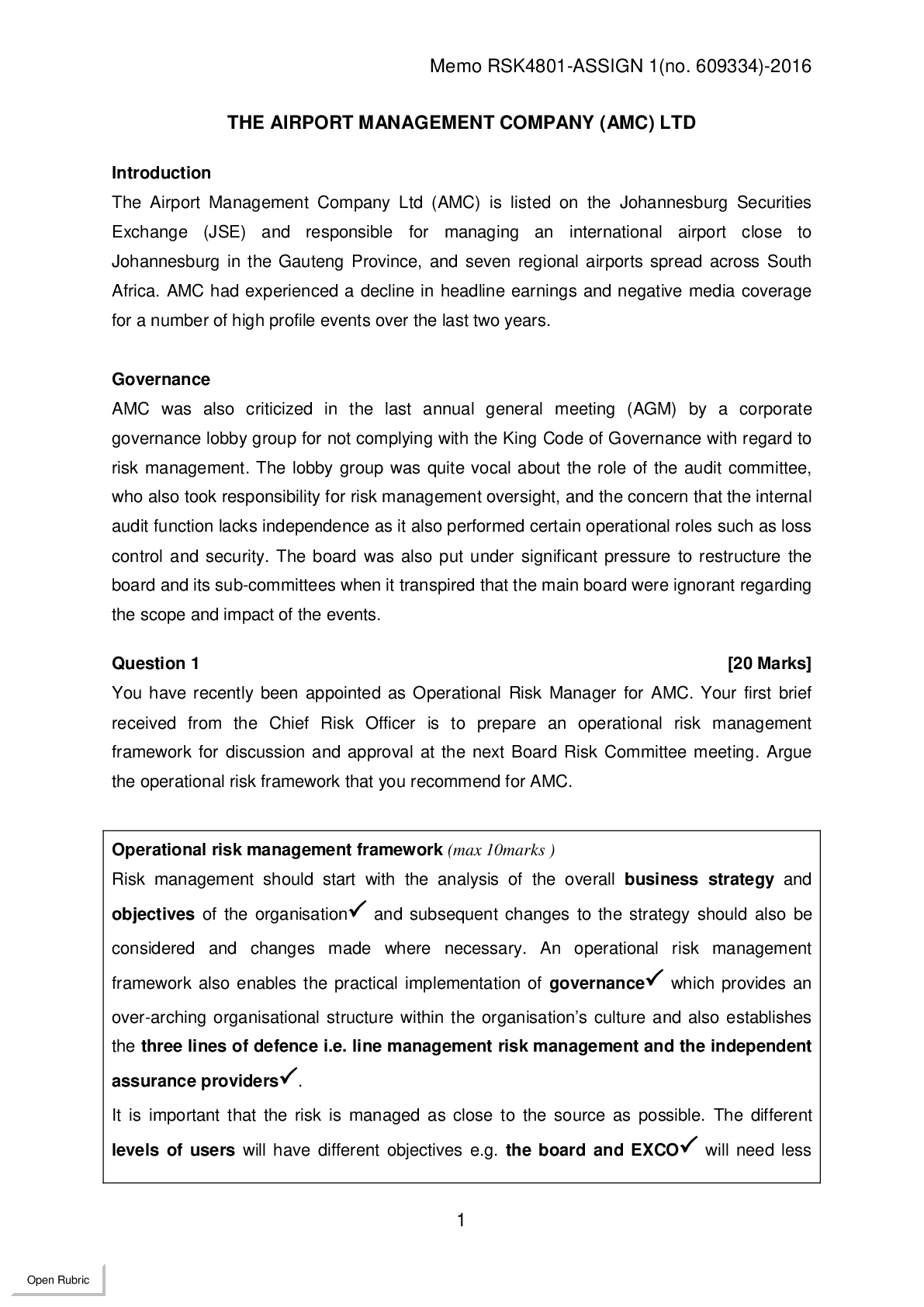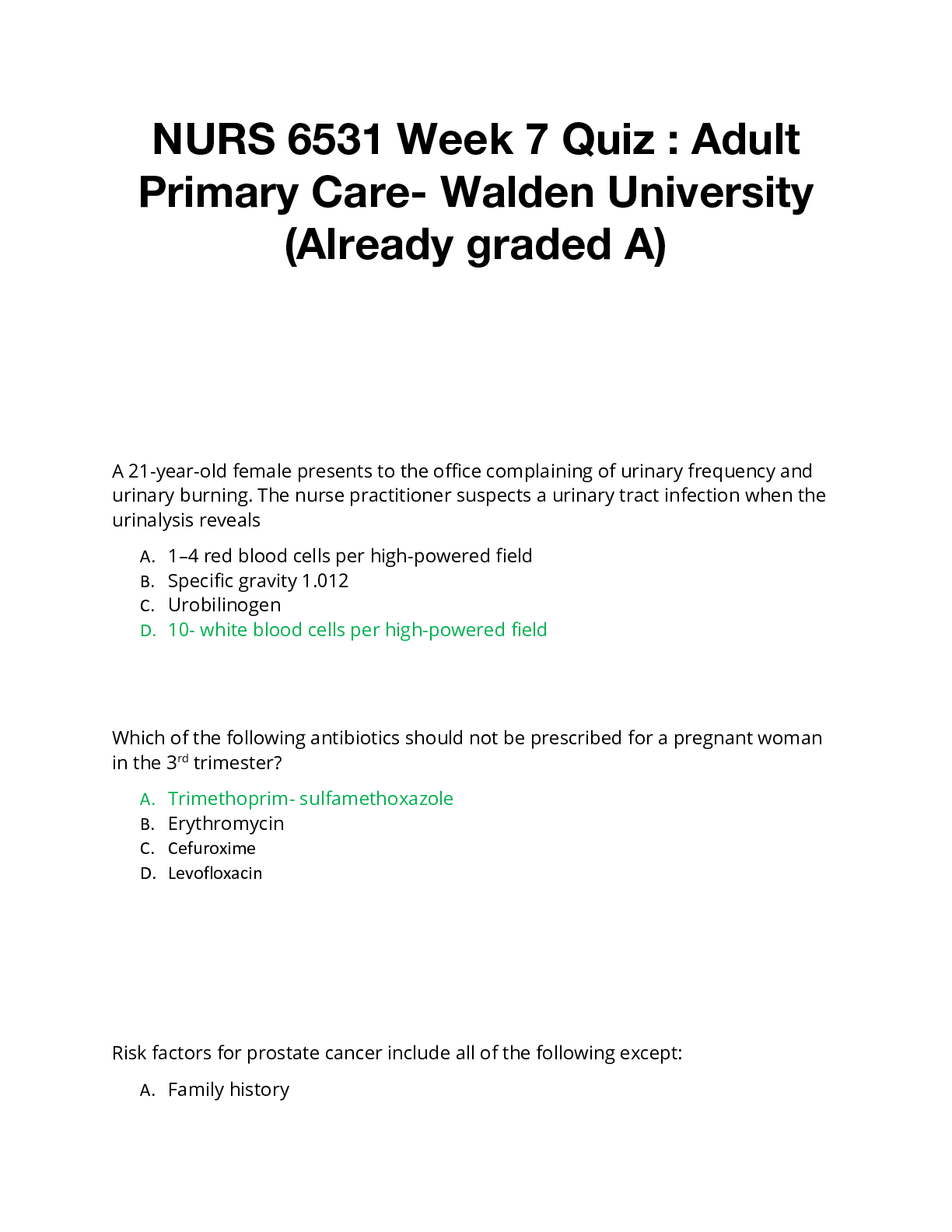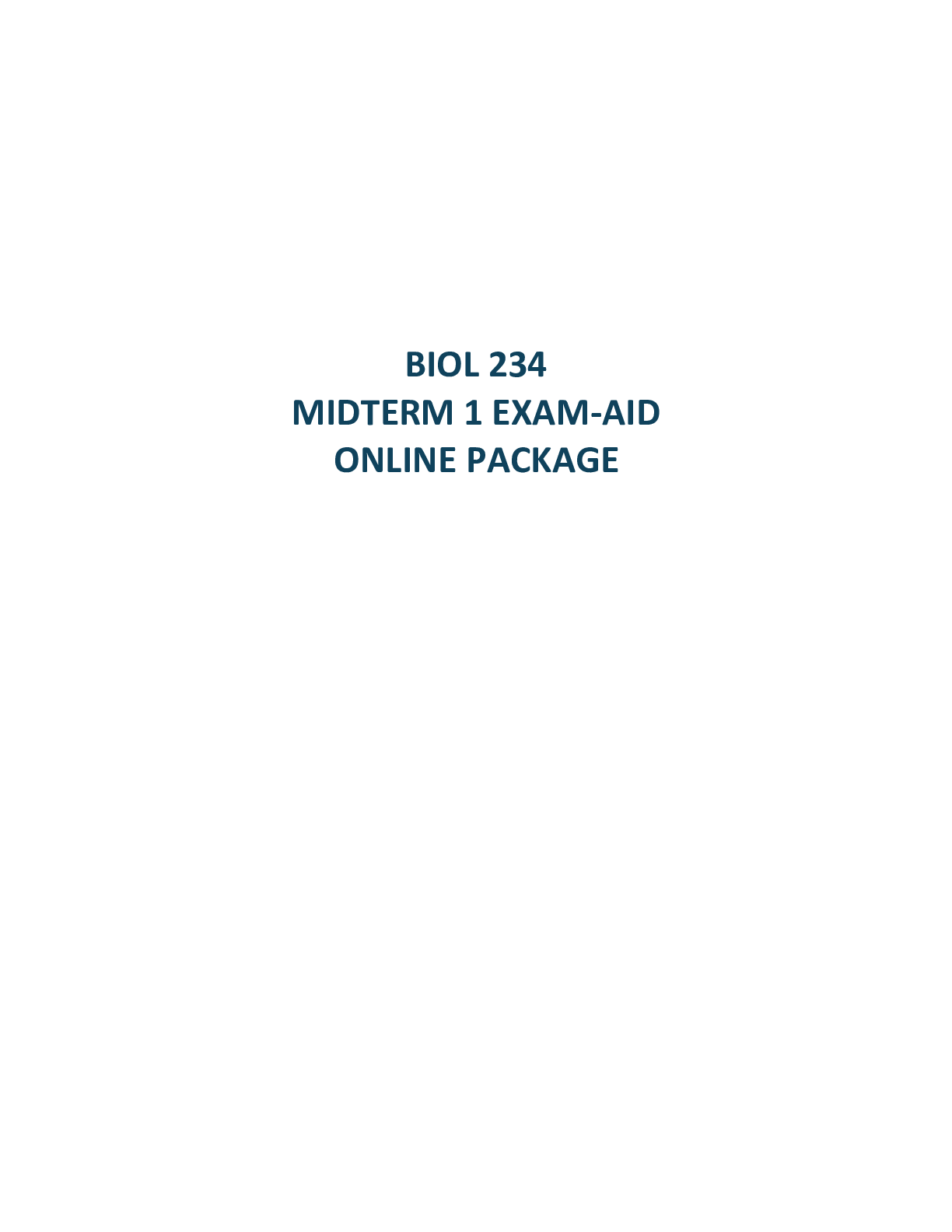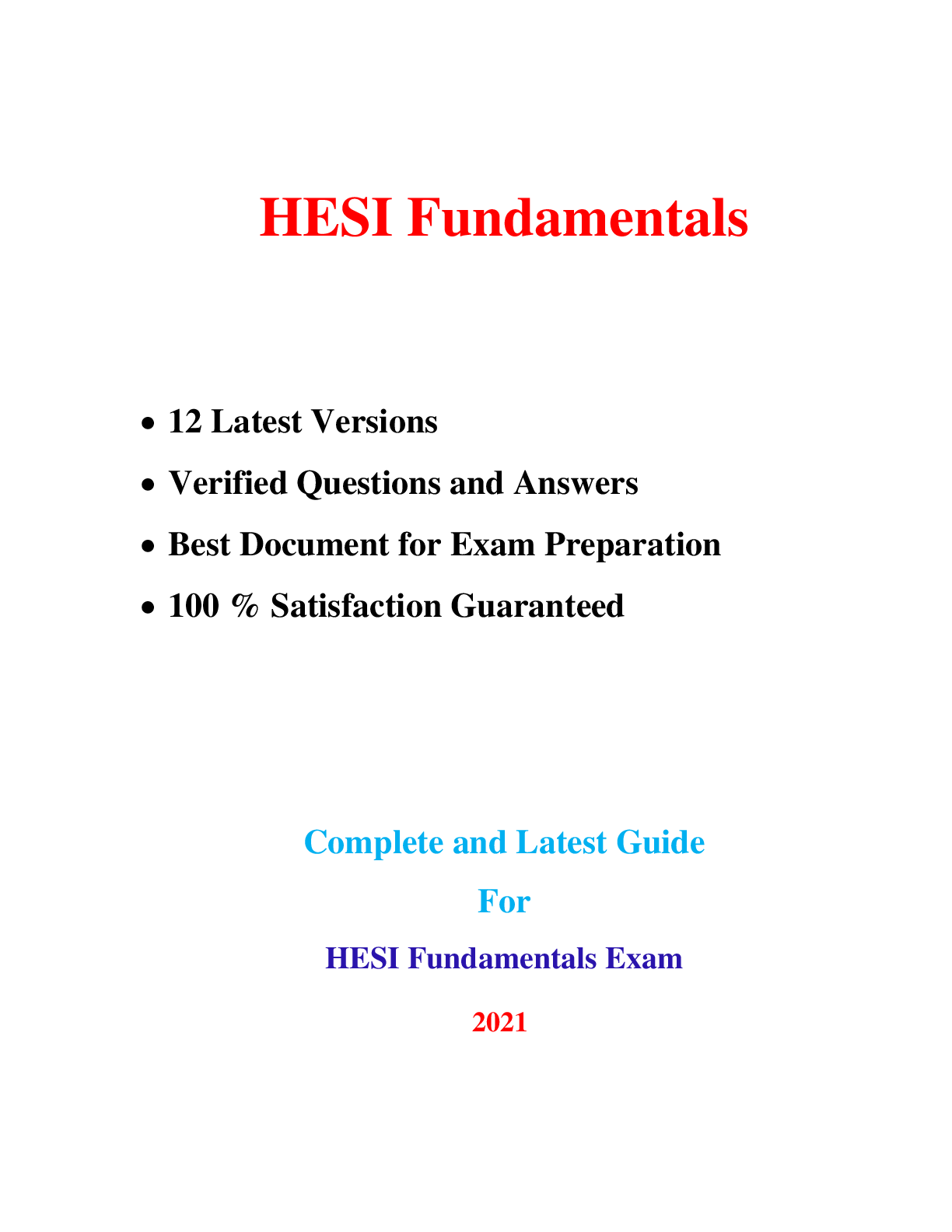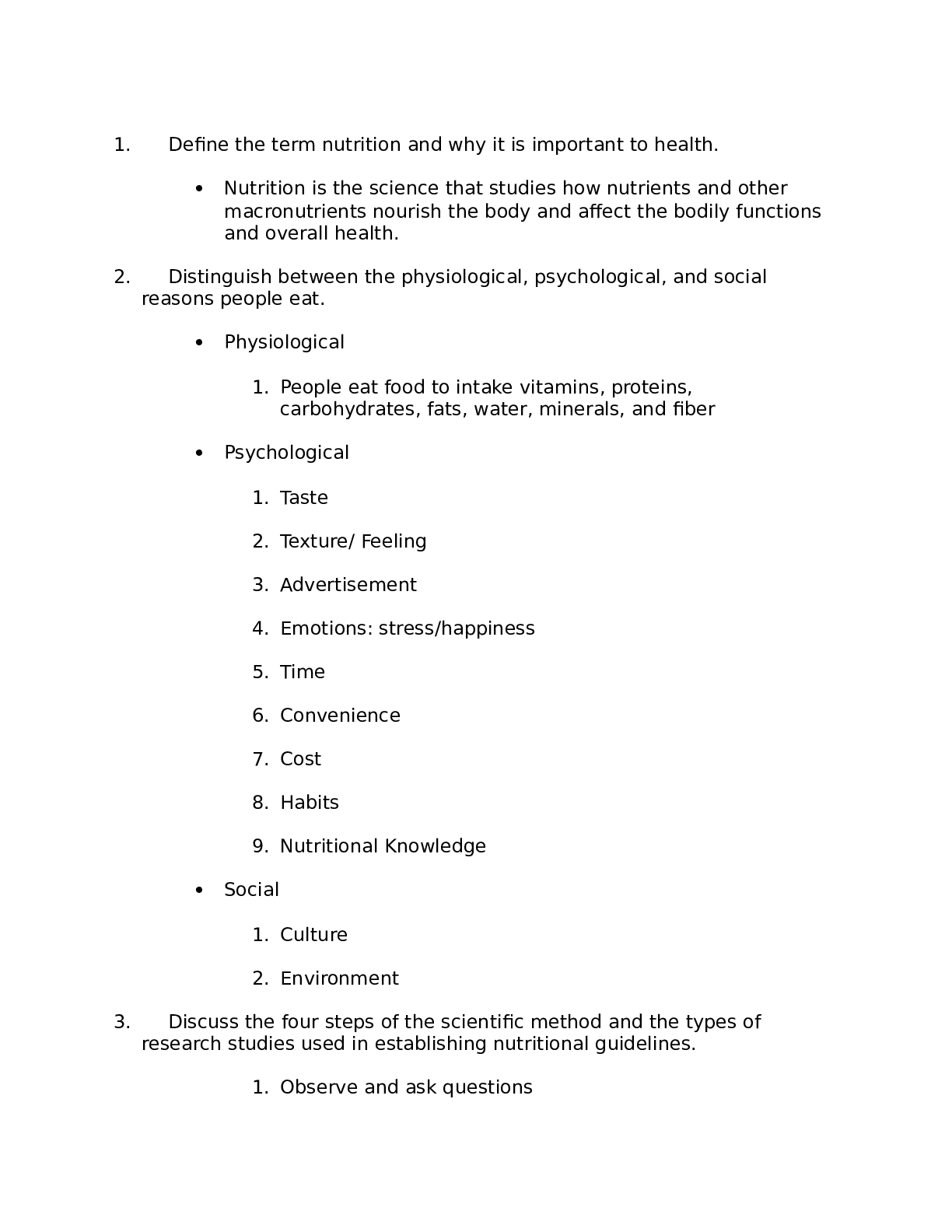*NURSING > QUESTIONS & ANSWERS > Chapter 38: Oxygenation and Tissue Perfusion (All)
Chapter 38: Oxygenation and Tissue Perfusion
Document Content and Description Below
1. The nurse finds the patient in cardiopulmonary arrest with no pulse or respirations. Which oxygen delivery device will the nurse use for this patient? a. Non-rebreather mask b. Bag-valve-mask un... it c. Continuous positive airway pressure (CPAP) d. High-flow nasal cannula 2. The nurse is caring for a patient who is slow to awaken following general anesthesia. The patient is breathing spontaneously but is minimally responsive and having difficulty maintaining a patent airway. Which intervention is the most appropriate for the patient to improve oxygenation? a. Insert an oral airway. b. Lower the head of the bed. c. Turn the patient’s head to the side. d. Monitor the patient’s pulse oximetry. 3. The nurse is caring for a patient with a history of left-sided congestive heart failure who is acutely short of breath. The nurse hears fine crackles throughout both lung fields and notes that the patient’s pulse oximetry is only 88% on 4 L of oxygen. What is the priority intervention of the nurse? a. Administer the ordered intravenous diuretic. b. Prepare for insertion of a chest tube. 4. The nurse is caring for a patient who has been intubated with an oral endotracheal tube for several weeks. The physicians predict that the patient will need to remain on a ventilator for at least several more weeks before he will be able to maintain his airway and breathe on his own. What procedure does the nurse anticipate will be planned for the patient to facilitate recovery? a. Placement of a tracheostomy tube b. Diagnostic thoracentesis c. Pulmonary angiogram d. Lung transplantation surgery 5. The nurse is caring for a patient with a chest tube who was transported to radiology for testing. When the patient returns to the nursing unit, the transporter shows the nurse the patient’s chest tube collection device, which was badly damaged after being caught in the elevator door. What is the priority action of the nurse? a. Clamp the chest tube until the collection device is replaced. b. Cover the insertion site with a new occlusive dressing. c. Ensure that there is gentle bubbling in the water seal chamber. d. Check the patient’s lung sounds and pulse oximetry. [Show More]
Last updated: 2 years ago
Preview 1 out of 9 pages

Buy this document to get the full access instantly
Instant Download Access after purchase
Buy NowInstant download
We Accept:

Reviews( 0 )
$6.50
Can't find what you want? Try our AI powered Search
Document information
Connected school, study & course
About the document
Uploaded On
Jul 21, 2022
Number of pages
9
Written in
Additional information
This document has been written for:
Uploaded
Jul 21, 2022
Downloads
0
Views
211

